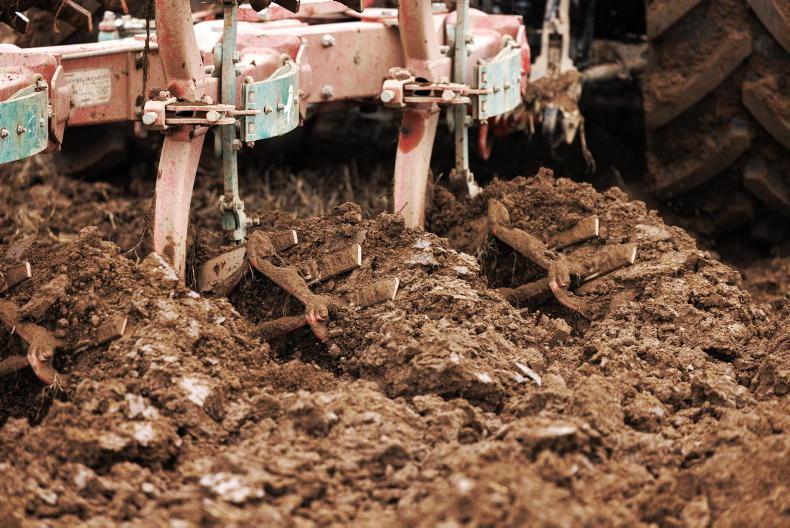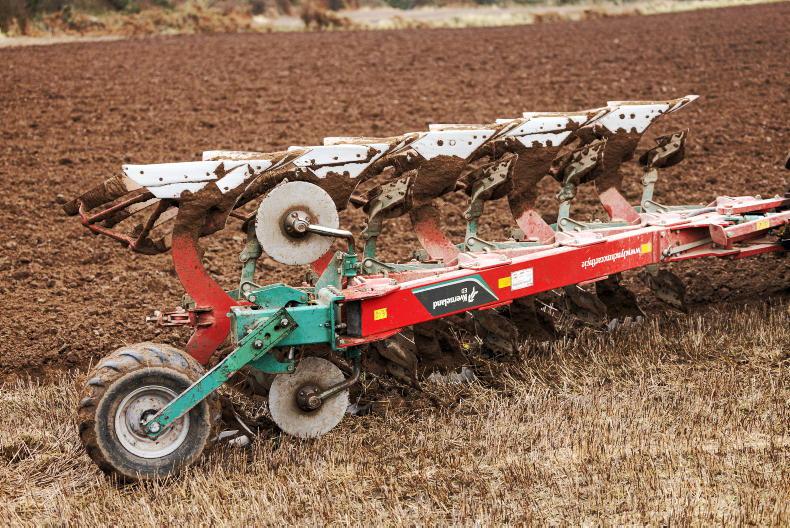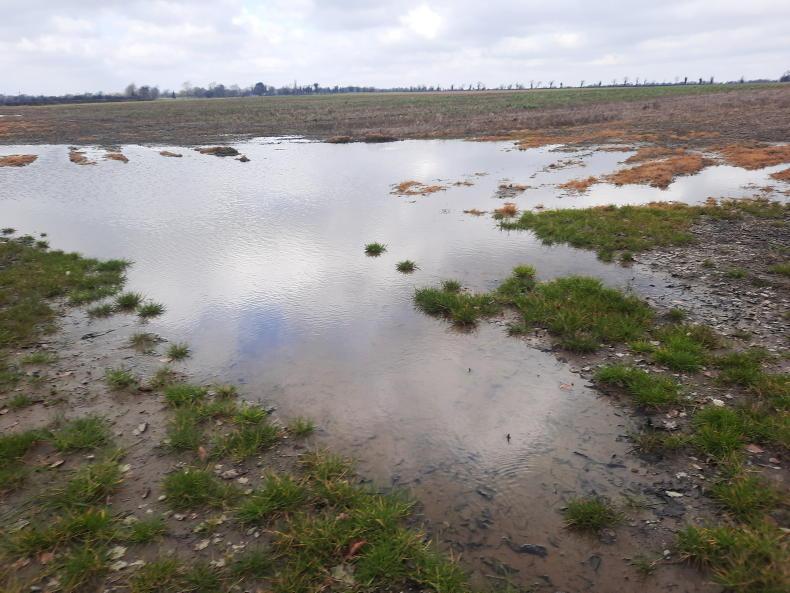Recent conditions are extremely challenging for soil cultivation and leave the soil prone to traffic damage too.
Growers will seek to balance the need to get a crop in as soon as possible, with the need to have acceptable seedbed conditions; avoid subsurface compaction; and to get a good proportion of the planned area sown.
Many will have much of what follows covered, but this list is worth considering.
Speeding up ploughing
Ploughing’s high-power demand usually results in a lower work-rate per labour / tractor unit. But a critical difference this year is the lack of a significant proportion of ploughing being completed in advance of secondary cultivation and sowing.
Increasing our ability to plough quickly is not easy.
We should ensure that:
Every available plough, tractor and labour unit is mobilised, if there are unused ploughs available (autumn min-tillers, reseeding contractors, dealers’ yards, etc). If labour is available, shift-working with the plough may be an option, but only if there are sufficient competent operators to do it safely. Ploughing shallow (175mm to 220mm /6in to 9in), if there is no need for excessive depth, will speed the job up a little if power is limiting.Make sure there is nothing to slow the plough down: gates, fallen boughs, no support diesel, etc.
Reducing ploughing depth can speed up the operation.
Fallow headlands
Consider, in consultation with your adviser, leaving the field headlands fallow. This will speed up all operations, particularly ploughing, much more than the area reduction, as headland work, particularly ploughing, can be slow. It’s feasible, as it will often remove the lowest-yielding area of the crop (less profitable) in a season where spring crop margins could be very low.
Tilling/sowing and spraying can be done without headland runs too, but the fertiliser spreader should cross the ploughing for the end run to give an even application across the sown end. Set up markers to ensure all machinery work ends at the same point and that it is mapped properly for allocation to ‘fallow’ or ‘crop’ in your BISS application. Carefully consider the impact on rotations, premium crops, weeds, field surface, etc. This is worth considering, as we reach the end of April and extra seed would be available for higher sowing rates in the main field areas.
A five-furrow plough on a 200hp tractor will cover about 3.5ac per hour.
If there are non-inversion-type min-till machines available for deeper working, these can be exploited too, instead of the plough, to speed up the initial cultivation.
Tine or tine and disc combination machines (‘top-down’ type, etc) may be best as 150mm (6in) depth is probably needed to help the ground dry out. Use carefully to avoid creating wet loose lumps. Disc-only machines may not achieve the depth and may compact below the disc in these conditions.A 150kW (200HP) tractor and five-furrow plough may plough 1.4ha (3.5ac) per hour. The same tractor and driver with a 4m tine and disc cultivator would more typically cover 3.5ha (8.5ac) per hour. But ensure the following drilling unit can sow in the conditions created by the cultivator.Shallow tillage, strip-till drilling and direct drilling, without prior primary cultivation, are generally not good options for late spring sowing.
Mind soil when it’s drying out
When working the soil, remember it’s likely to be wet underneath while drying out quickly on top. Use lighter tractors where they will do the job and consider wheel/tyre sizes/dual wheels etc, if you have the option.
Use the minimum tyre pressures for the load being carried.
Switch headlands around, if necessary, or possible to avoid turning on the wetter headland.
Plan work carefully to reduce passes and all associated traffic (including seed delivery/drill filling, etc).

There are plenty of wet headlands on farms across the country.
Structure
Press or pack ploughed ground if it turns up in a blocky smeared structure, and avoid multiple passes of cultivating implements, which will dry out the seedbed despite wetter conditions deeper in the profile.
Conserve surface moisture as much as possible and roll post sowing when conditions allow.
Plough lighter, where possible.Leaving headlands fallow may speed up work.Tine or tine-and-disc-combination machines can be used to speed up the process.Keep in touch with others for moral and practical support.Use lighter tractors where possible.Keep minimum tyre pressures.Plan work to reduce field traffic.
Dermot Forristal.
You can hear more from Dermot Forristal on the Tillage Podcast here:
here
Recent conditions are extremely challenging for soil cultivation and leave the soil prone to traffic damage too.
Growers will seek to balance the need to get a crop in as soon as possible, with the need to have acceptable seedbed conditions; avoid subsurface compaction; and to get a good proportion of the planned area sown.
Many will have much of what follows covered, but this list is worth considering.
Speeding up ploughing
Ploughing’s high-power demand usually results in a lower work-rate per labour / tractor unit. But a critical difference this year is the lack of a significant proportion of ploughing being completed in advance of secondary cultivation and sowing.
Increasing our ability to plough quickly is not easy.
We should ensure that:
Every available plough, tractor and labour unit is mobilised, if there are unused ploughs available (autumn min-tillers, reseeding contractors, dealers’ yards, etc). If labour is available, shift-working with the plough may be an option, but only if there are sufficient competent operators to do it safely. Ploughing shallow (175mm to 220mm /6in to 9in), if there is no need for excessive depth, will speed the job up a little if power is limiting.Make sure there is nothing to slow the plough down: gates, fallen boughs, no support diesel, etc.
Reducing ploughing depth can speed up the operation.
Fallow headlands
Consider, in consultation with your adviser, leaving the field headlands fallow. This will speed up all operations, particularly ploughing, much more than the area reduction, as headland work, particularly ploughing, can be slow. It’s feasible, as it will often remove the lowest-yielding area of the crop (less profitable) in a season where spring crop margins could be very low.
Tilling/sowing and spraying can be done without headland runs too, but the fertiliser spreader should cross the ploughing for the end run to give an even application across the sown end. Set up markers to ensure all machinery work ends at the same point and that it is mapped properly for allocation to ‘fallow’ or ‘crop’ in your BISS application. Carefully consider the impact on rotations, premium crops, weeds, field surface, etc. This is worth considering, as we reach the end of April and extra seed would be available for higher sowing rates in the main field areas.
A five-furrow plough on a 200hp tractor will cover about 3.5ac per hour.
If there are non-inversion-type min-till machines available for deeper working, these can be exploited too, instead of the plough, to speed up the initial cultivation.
Tine or tine and disc combination machines (‘top-down’ type, etc) may be best as 150mm (6in) depth is probably needed to help the ground dry out. Use carefully to avoid creating wet loose lumps. Disc-only machines may not achieve the depth and may compact below the disc in these conditions.A 150kW (200HP) tractor and five-furrow plough may plough 1.4ha (3.5ac) per hour. The same tractor and driver with a 4m tine and disc cultivator would more typically cover 3.5ha (8.5ac) per hour. But ensure the following drilling unit can sow in the conditions created by the cultivator.Shallow tillage, strip-till drilling and direct drilling, without prior primary cultivation, are generally not good options for late spring sowing.
Mind soil when it’s drying out
When working the soil, remember it’s likely to be wet underneath while drying out quickly on top. Use lighter tractors where they will do the job and consider wheel/tyre sizes/dual wheels etc, if you have the option.
Use the minimum tyre pressures for the load being carried.
Switch headlands around, if necessary, or possible to avoid turning on the wetter headland.
Plan work carefully to reduce passes and all associated traffic (including seed delivery/drill filling, etc).

There are plenty of wet headlands on farms across the country.
Structure
Press or pack ploughed ground if it turns up in a blocky smeared structure, and avoid multiple passes of cultivating implements, which will dry out the seedbed despite wetter conditions deeper in the profile.
Conserve surface moisture as much as possible and roll post sowing when conditions allow.
Plough lighter, where possible.Leaving headlands fallow may speed up work.Tine or tine-and-disc-combination machines can be used to speed up the process.Keep in touch with others for moral and practical support.Use lighter tractors where possible.Keep minimum tyre pressures.Plan work to reduce field traffic.
Dermot Forristal.
You can hear more from Dermot Forristal on the Tillage Podcast here:
here










 This is a subscriber-only article
This is a subscriber-only article










SHARING OPTIONS: